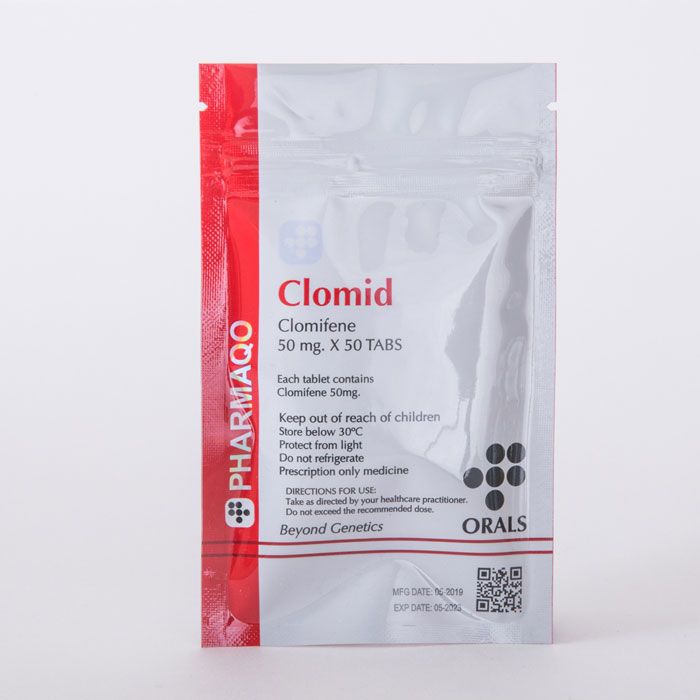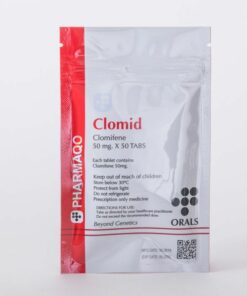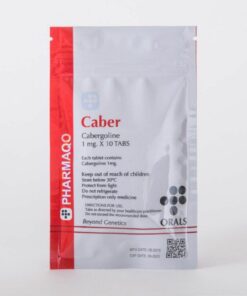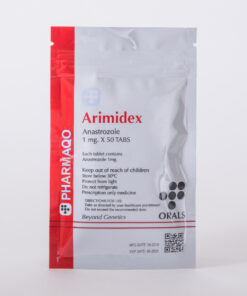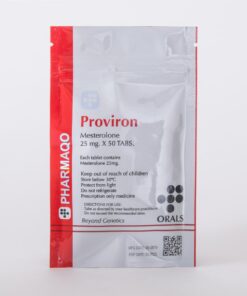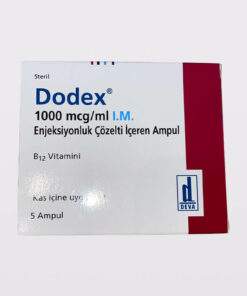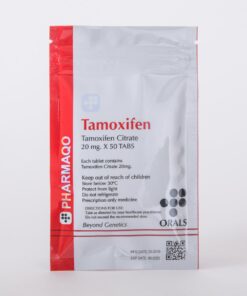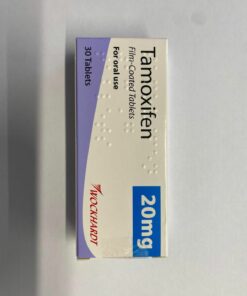Clomid 50mg – Legal Clomid 50mg Online US
Clomid 50mg is a steroid that is the premium legal steroid by usaelite steroids which is available on sale everywhere in 2023.
What is Clomid?
Clomiphene citrate, a nonsteroidal powder that was approved by the Food and Drug Administration (FDA) in 1967 for use as a fertility medication, is sold under the brand name “Clomid.” It has a place with a class of meds known as ovulatory energizers. For utilization, the powder is squeezed into little tablets, normally dosed at 50 milligrams for each tablet. Clomid can be prescribed by a gynecologist, whereas many other fertility treatments require an appointment with a reproductive endocrinologist at a specialized fertility clinic. A non-steroidal fertility drug is clomid. It causes hormones to be released by the pituitary gland in order to encourage ovulation, or the ovarian egg release. Women with certain medical conditions that prevent natural ovulation, such as polycystic ovary syndrome, can use clomid to induce ovulation. There are additional uses of clomid that are not included in this medication guide.
How does Clomid Works?
Simply put, taking Clomid causes your body to release hormones that make it more likely that your ovaries will release a mature, fertilized egg. Some people take Clomid as part of fertility treatment, like an IUI or IVF cycle, but many people just start by having sex and taking Clomid. According to Kenan Omurtag, M.D., division director of the reproductive endocrinology and infertility department at Washington University School of Medicine in St. Louis, the goal is to “try to increase the odds of sperm and egg meeting.”
The way clomid works is that it binds to the brain’s estrogen-like receptors. So, your brain thinks your estrogen levels are low and makes more FSH, or follicle-stimulating hormone, which can make estrogen go up, to make up for it. The primary function of FSH is related to fertility; as the name suggests, the hormone stimulates ovarian follicle growth. An ovarian follicle is a small, fluid-filled sac in your ovaries that houses an oocyte, an undeveloped egg. The majority of women begin their lives with a reserve of millions of oocytes that gradually diminishes over time.
FSH aids in the development of oocytes into mature eggs by triggering the growth of follicles. While taking Clomid, it is ideal for at least one of those eggs to mature sufficiently to escape the follicle and enter the fallopian tubes, where it will meet sperm and become fertilized into an embryo.
Do you need prescription for buying Clomid?
Clomid is just accessible by medicine, and ought to just be utilized under the oversight of your doctor. Due to the possibility of drug interactions and side effects, it is never recommended to purchase Clomid online.
Where can I buy Clomid?
Clomid can be purchased at most drug stores and online pharmacies with a doctor’s prescription. You can also purchase this item with usaelitesteroids.com
When and How to take Clomid?
Clomid comes in 50-milligram tablets. One tablet per day for five days on the third, fourth, or fifth day of your menstrual cycle is the most common starting dose. Unless you are using Clomid during an IUI or IVF cycle, you must then have sex during your fertile window, which is the six days of your menstrual cycle when you can conceive.
On the off chance that you don’t get pregnant during your most memorable month of taking Clomid, your primary care physician might expand your portion to a few tablets every day during your next period. Never take Clomid without a solution.
When should you not take Clomid?
If you have an allergy to clomiphene or any of the following:
1) irregular uterine bleeding;
2) an ovarian cyst that has nothing to do with polycystic ovary syndrome;
3) liver disease, past or present;
4) a pituitary gland cancer;
5)an untreated or uncontrolled issue with your thyroid or adrenal organ; or
6) if you are expecting a child. Inform your doctor if you have: in order to ensure that Clomid is safe for you.
7) Endometriosis or fibroids in the uterus
If you are already pregnant, you should not take Clomid.
If you are concerned about how Clomid might affect a new pregnancy, talk to your doctor. Clomiphene can pass into bosom milk and may hurt a nursing child. In some women, this medication may reduce the amount of breast milk produced. If you’re breastfeeding, tell your doctor. If you take Clomid for more than three treatment cycles, you might be more likely to get an ovarian tumor. Discuss your particular risk with your physician. Treatment for infertility may increase your likelihood of having twins or triplets. Both the mother and the unborn children are at risk during these pregnancies. If you are concerned about this risk, consult your physician.
What are the benefits of taking Clomid?
Clomid is a fertility drug that aids in the stimulation of egg follicle production. Prior to referring a couple to more specialized fertility treatments, doctors frequently prescribe it. It is cost-effective and has a low chance of having negative effects. The aftereffects will generally be minor too. Infertility in women is treated with this medication. It accomplishes this by encouraging an increase in the amount of hormones that support an egg’s growth and development during ovulation. Women with primary pituitary or ovarian failure, in which the ovaries no longer produce eggs as they should, should not take this medication.
What are the side effects of Clomid?
If you notice any of the symptoms of an allergic reaction to Clomid, seek immediate medical attention: hives; difficult respiration; face, lips, tongue, or throat swelling. After the initial treatment, some women taking this medication experience a condition known as ovarian hyperstimulation syndrome (OHSS). OHSS can be dangerous to one’s life. If you experience any of the following OHSS symptoms, immediately contact your physician:
1) bloating and stomach pain;
2) diarrhoea, nausea, and vomiting;
3) rapid weight gain, particularly in the midsection and face;
4)little or no peeing; or on the other hand
5)pain when you inhale, quick pulse, feeling winded (particularly while resting).
If you are experiencing any of the following:
1) Pelvic pain or pressure, as well as pelvic enlargement;
2) issues with vision;
3) noticing “floaters” or flashes of light in your vision;
4) an increased sensitivity to light in your eyes; or 5) persistent vaginal bleeding.
Common side effects of Clomid include:
1) Flushing (a feeling of warmth, redness, or tingling);
2) Soreness or pain in the chest;
3)headache; or
4) sudden spotting or bleeding.
What are the precautions yo have to take while taking Clomid?
Clomiphene for female fertility Because Clomid can cause side effects like blurred vision or dizziness, it’s best to wait to see how the drug affects you before doing anything dangerous like driving or using heavy machinery.
Quite possibly clomiphene might cause birth absconds assuming it is taken after you become pregnant. Quit taking this medication and tell your PCP right away in the event that you assume you have become pregnant while as yet taking clomiphene. Changes in vision, including blurred vision, difficulty reading, and others, may result from this medication.
What are the Clomid Dosage?
Considerations in General
Physicians with expertise in the treatment of gynecologic or endocrine disorders should supervise the evaluation and treatment of candidates for clomiphene citrate therapy. Clomiphene citrate therapy should only be chosen after thorough diagnostic testing (see INDICATIONS AND USE). The arrangement of treatment ought to be illustrated ahead of time. Before beginning treatment with clomiphene citrate, obstacles to achieving the treatment objective must be eliminated or adequately addressed. The patient and others involved in achieving a pregnancy should be informed of the therapeutic objective and its potential risks.
Following a course of clomiphene citrate, ovulation typically occurs between five and ten days later. Coitus should occur at the same time as ovulation is anticipated. Suitable tests to decide ovulation might be helpful during this time
Dosage Recommendation
The selected patient should begin treatment with a low dose of 50 mg Clomid per day (one tablet) for five days. Only those patients who do not ovulate in response to cyclic 50 mg clomiphene citrate should receive an increase in dosage. A low dose or span of treatment course is especially prescribed in the event that uncommon aversion to pituitary gonadotropin is thought, for example, in patients with polycystic ovary disorder (see Alerts; Syndrome of Ovarian Hyperstimulation) Between each treatment cycle, the patient should be carefully evaluated to rule out pregnancy, ovarian enlargement, or the formation of ovarian cysts.
The dose of 50 mg per day for five days should be started on or around the fifth day of the cycle if progestin-induced bleeding is planned or if uterine bleeding occurs naturally prior to treatment. If the patient hasn’t had any uterine bleeding recently, therapy can start at any time. There is no advantage to increasing the dose in subsequent treatment cycles when ovulation occurs at this dose.
On the off chance that ovulation doesn’t seem to happen after the main course of treatment, a second course of 100 mg day to day (two 50 mg tablets given as a solitary everyday portion) for 5 days ought to be given. After taking precautions to rule out pregnancy, this course can begin as soon as 30 days after the previous one. It is not recommended to increase the therapy beyond 100 mg/day for five days.
After the initial course of treatment, the majority of patients who are going to ovulate will do so. After three courses of treatment, ovulation does not occur, so the patient should be reevaluated and no further clomiphene citrate treatment is recommended. If there are three ovulatory responses but no pregnancy is achieved, no further treatment is advised. After an ovulatory response, the patient should be reevaluated if menses do not occur. After about six cycles, cyclic therapy is not recommended for long-term use (see PRECAUTIONS).
What are the Dosing Information?
Normal Adult Dose for Inducing Ovulation:
50 mg taken once daily for five days. Patients who haven’t had any recent uterine bleeding can start therapy at any time, but it should be started on or around the fifth day of the menstrual cycle.
Up to two additional courses of 50 mg of Clomid can be taken orally once a day for five days in the event that ovulation takes place but pregnancy is not achieved. After pregnancy has been ruled out, any subsequent course can be started as soon as 30 days after the previous one.
After the first course of treatment, the majority of patients conceive. However, a second course of 100 mg/day for five days may be administered as early as 30 days after the initial course if the patient does not conceive. After 30 days, if necessary, a third course of 100 mg/day for 5 days may be administered.
The manufacturer does not recommend treatments that go beyond three cycles, dosages of more than 100 mg per day, or course lengths of more than five days. However, women who received up to 200 mg/day for five days, an extended 10-day course of therapy, or consecutive cycles of treatment beyond the manufacturer’s recommended three have reported successful pregnancies and term deliveries.
Dose for Lactation Suppression in Adults:
For five days, take 50 to 100 mg orally once daily. In most cases, only one course of treatment is necessary.
Dose for Oligospermia in Adults:
25 to 100 mg, once daily. Typically, treatment is given over several months.
What is the proper method of taking Clomid?
Clomid is typically taken once daily for five days at a dose of 50 milligrams on days 3, 4, or 5 of the menstrual cycle. It is suggested that you take Clomid at the same time each day. Taking Clomid around evening time can help the patient rest through the aftereffects, however different ladies improve toward the beginning of the day.
When Should I take Clomid?
Regularly, Clomid is begun at day 3,4, or 5 of the feminine cycle at a portion of 50mg, when daily for 5 days. It is suggested that you take Clomid at the same time each day. Some women do better in the morning, but taking Clomid at night can help the patient sleep through the side effects.
Does Clomid Interact with any other Drug?
Clomid (clomiphene) is known to interact with three drugs, five diseases, and one alcohol-food interaction. One of the drug interactions is major, and the other two are moderate.
What happen when someone overdose Clomid?
Nausea, vomiting, visual disturbances, vasomotor flushes, scotoma, ovarian enlargement, and pain in the pelvis and abdomen are all signs of clomiphene citrate therapy overdose. Additionally, prolonged use causes nephrotoxicity.
How do you feel when taking Clomid?
When taking Clomid, psychological or emotional side effects are fairly common. With Clomid, about one fourth of women will experience psychological side effects. They are frequently referred to as “increased irritability” or “severe mood swings.” Numerous ladies say they have “genuinely horrendous PMS” while taking the medication
How should I take Clomid?
Follow your doctor’s instructions when taking Clomid. Follow the directions on your prescription’s label. Your doctor may occasionally alter your dosage to ensure the best results. Do not take this medication at a dose that is too high or too low, or for a longer time than directed. To ensure that you do not have any conditions that would prevent you from using Clomid safely, your doctor will conduct tests. Typically, clomid is taken for five days, beginning on the fifth day of your period. Follow the advice of your doctor. A pelvic exam is required prior to each cycle of treatment. While taking Clomid, you must remain under the supervision of a physician. After taking Clomid, you should ovulate within five to ten days. To work on your possibility becoming pregnant, you ought to have sex while you are ovulating. It’s possible that your doctor will have you take your temperature every morning and keep a chart of your daily readings. This will help you figure out when ovulation will happen. Most of the time, you shouldn’t use Clomid for more than three treatment cycles. In the event that ovulation happens yet you don’t seek pregnant after 3 treatment cycles, your PCP might stop treatment and assess your fruitlessness further. Keep at room temperature, away from light, moisture, and heat.
How much the Clomid Cost?
If insurance covers the cost of one Clomid cycle, it typically costs less than $10, whereas if it is not, it typically costs between $20 and $50. Clomid is typically covered by insurance, but you should always confirm this with your physician and insurance company.
Classification
1)Molar mass: 405.966 g/mol
2)CAS ID: 911-45-5
3)ChEMBL Id: 2355051
4)ChemSpider ID: 2698
5)Boiling point: 509 °C
6)IUPHAR ID: 4159
7)Other names: Clomiphene; Chloramifene;
Related products
Bulk Buy Product Deals
PCT Product Deals
PCT Product Deals
PCT Product Deals
PCT Product Deals
PCT Product Deals
PCT Product Deals
PCT Product Deals

